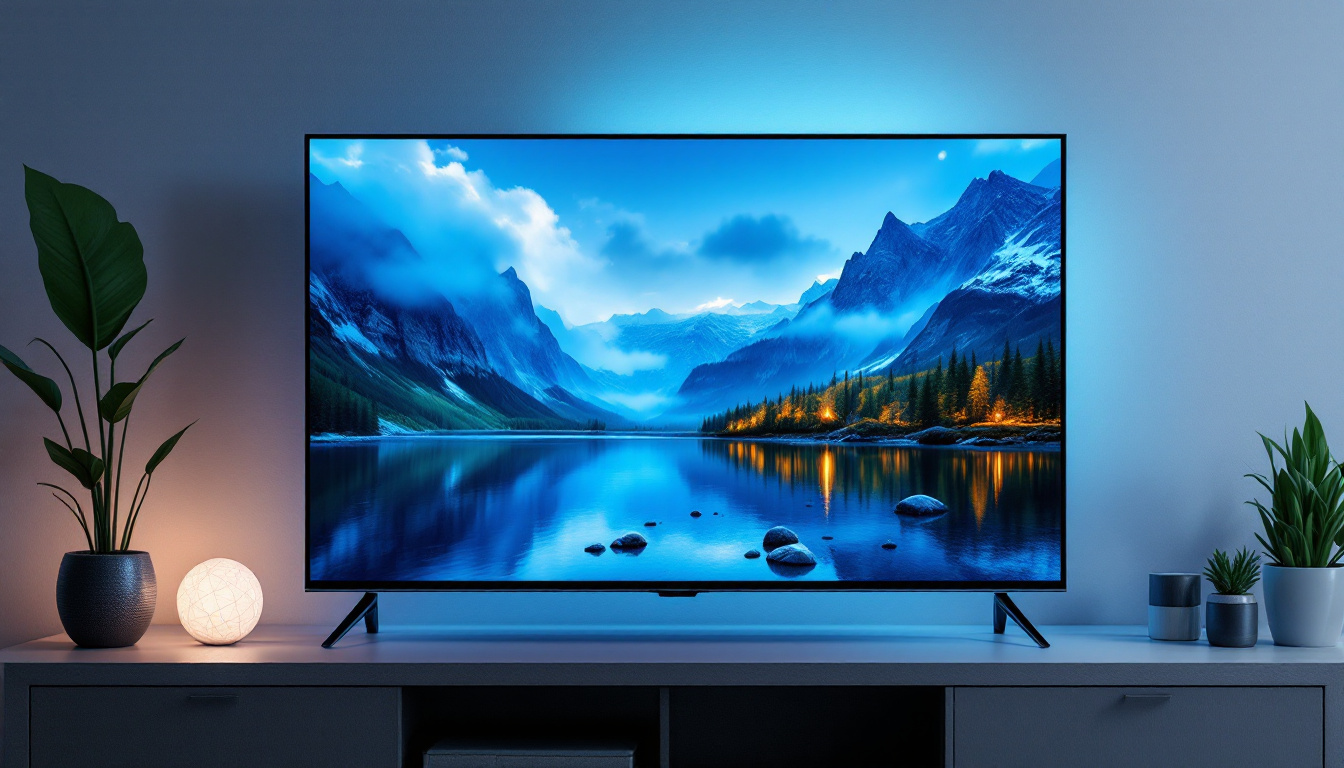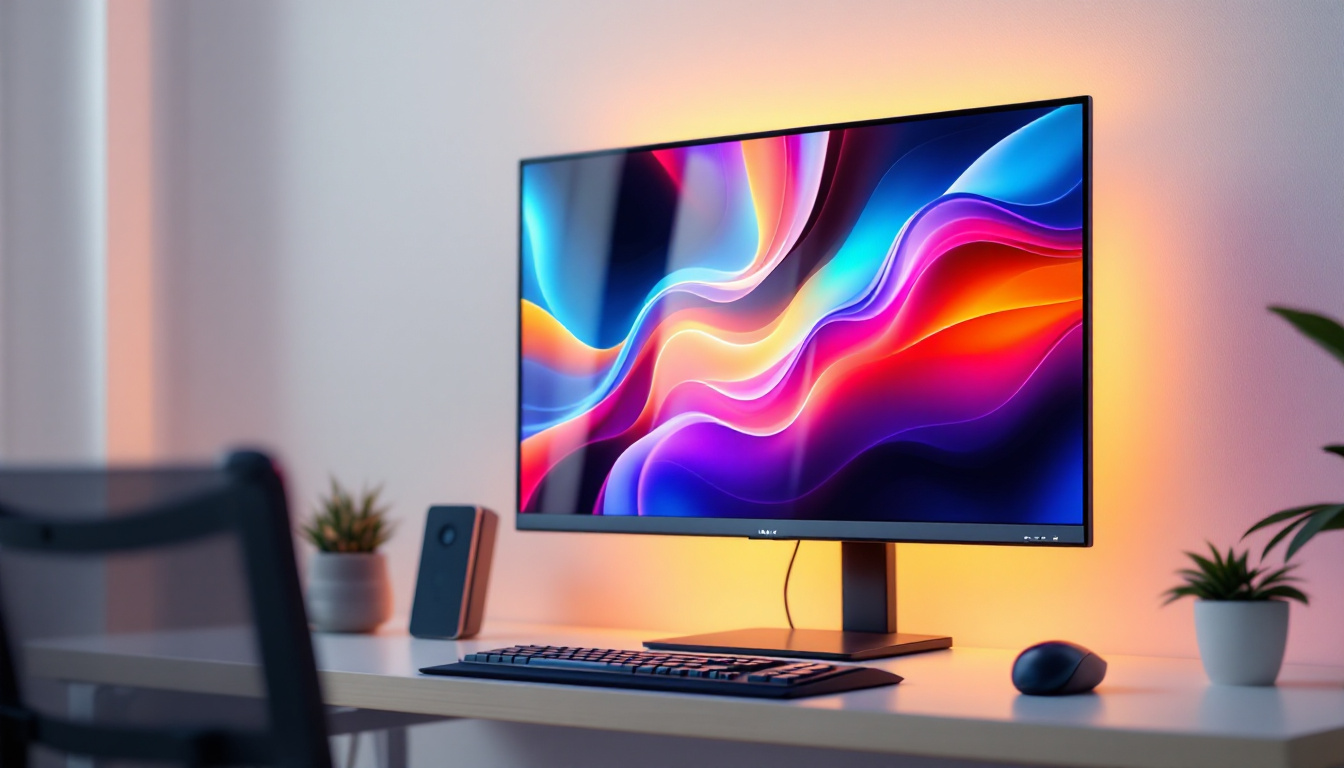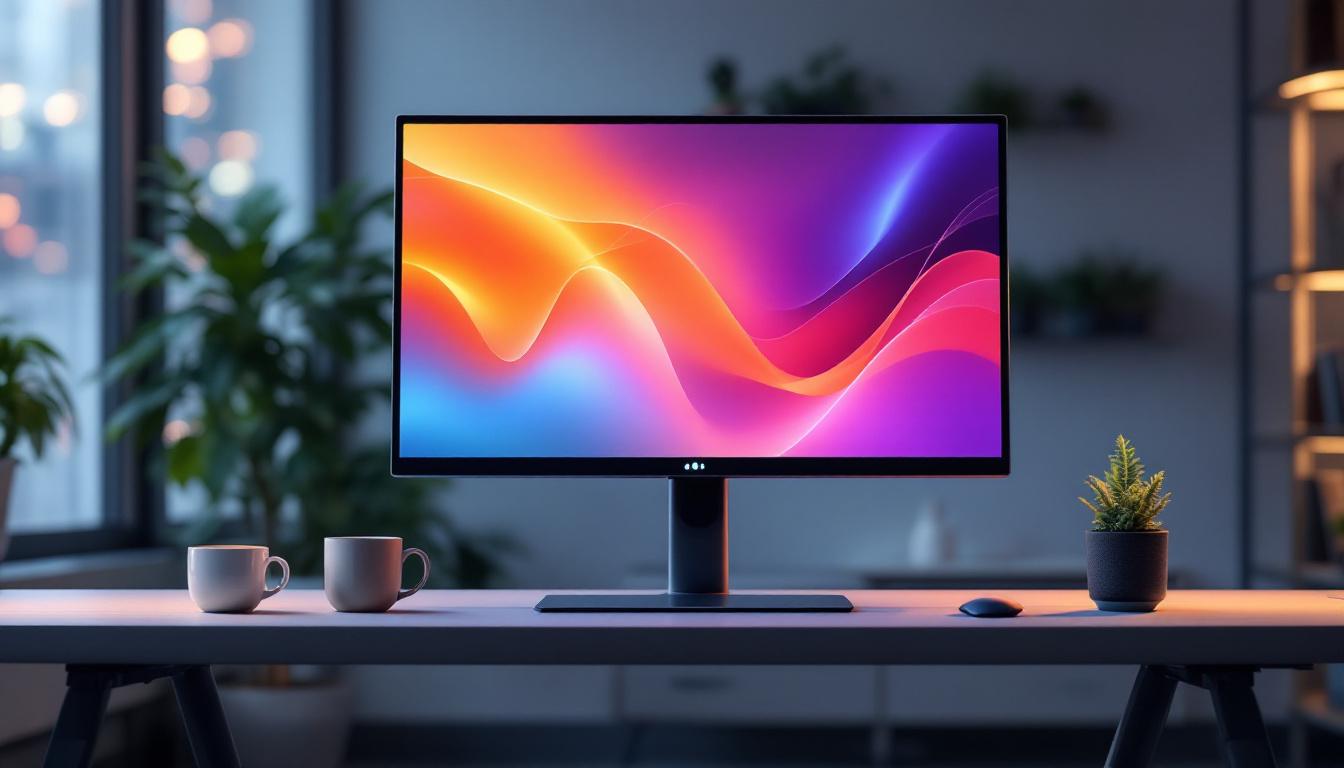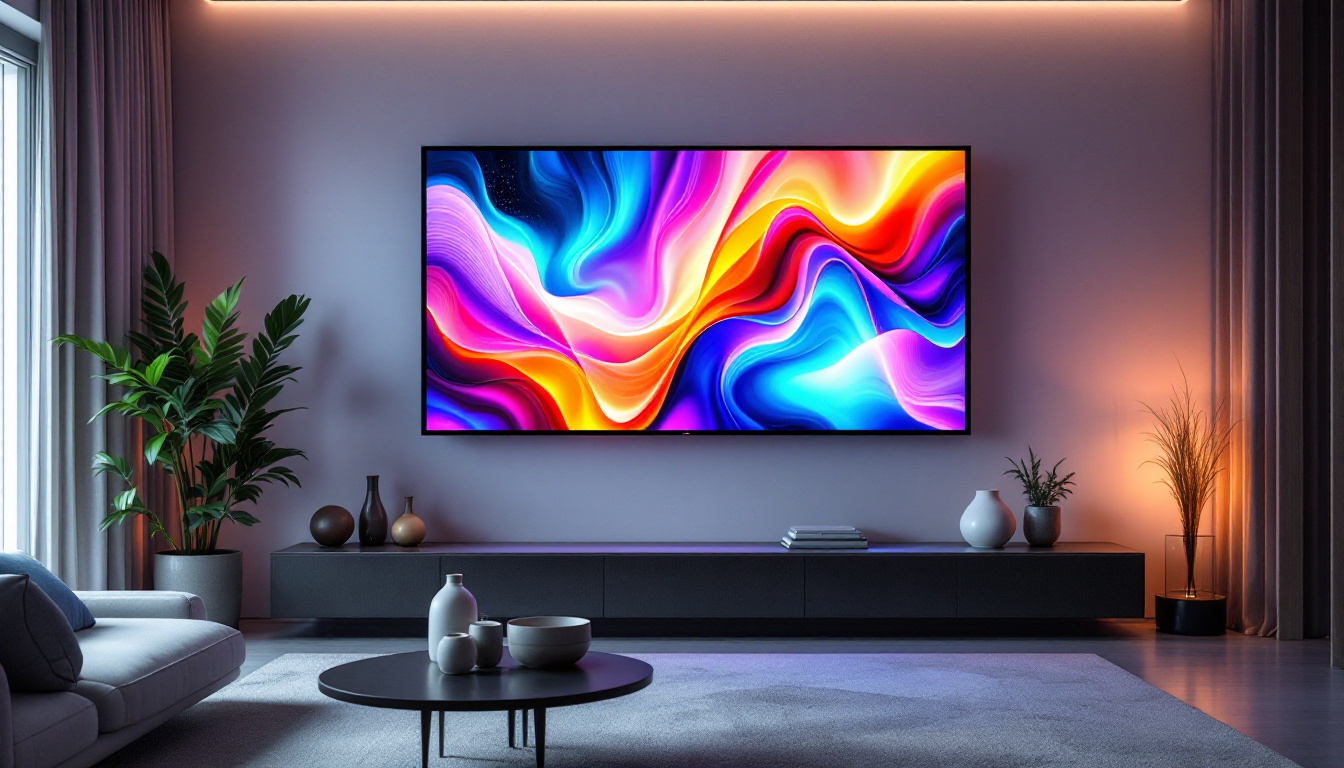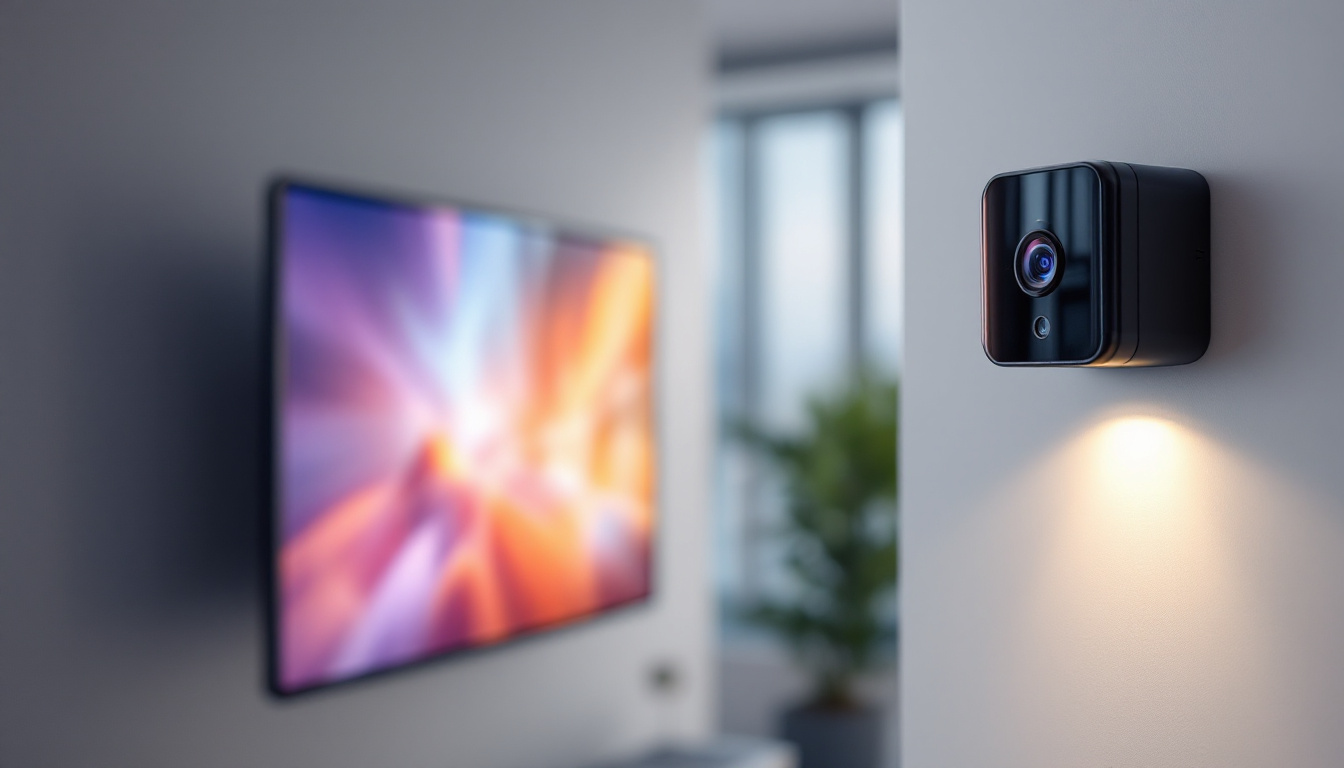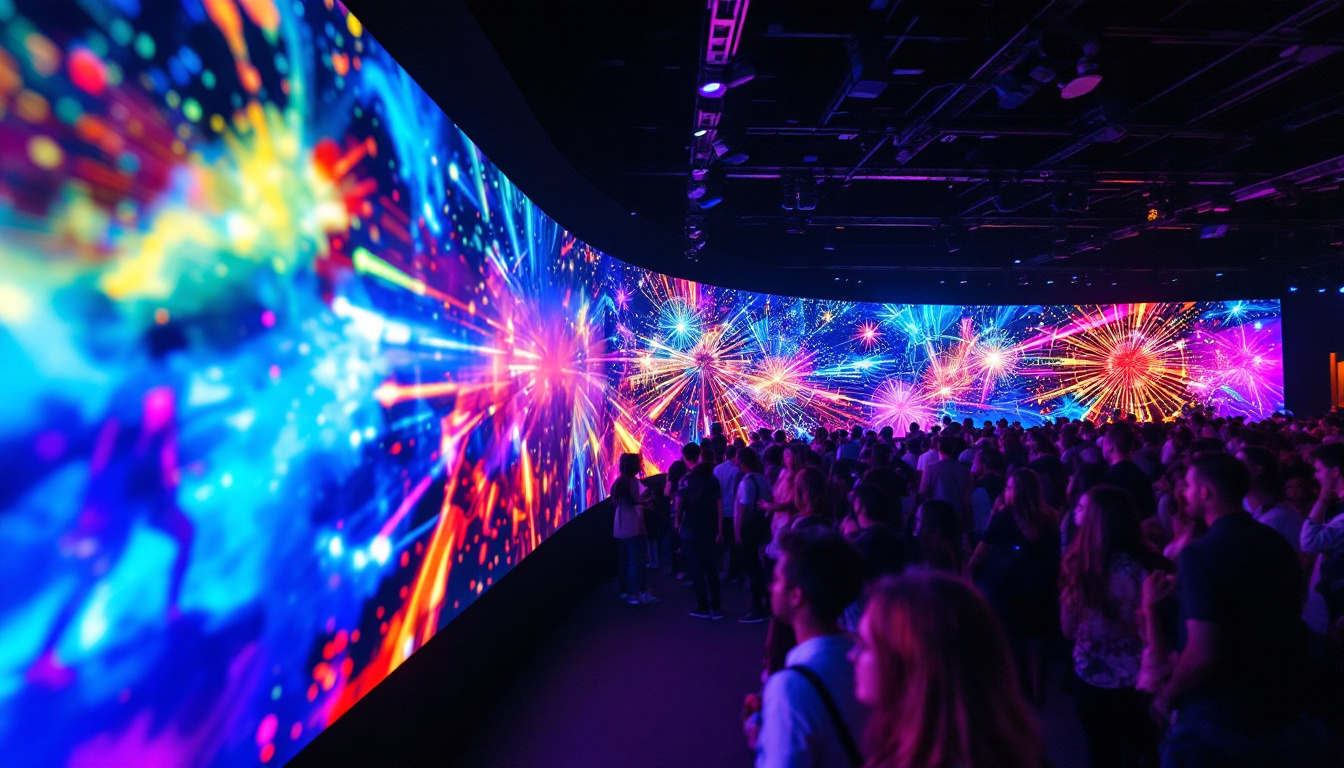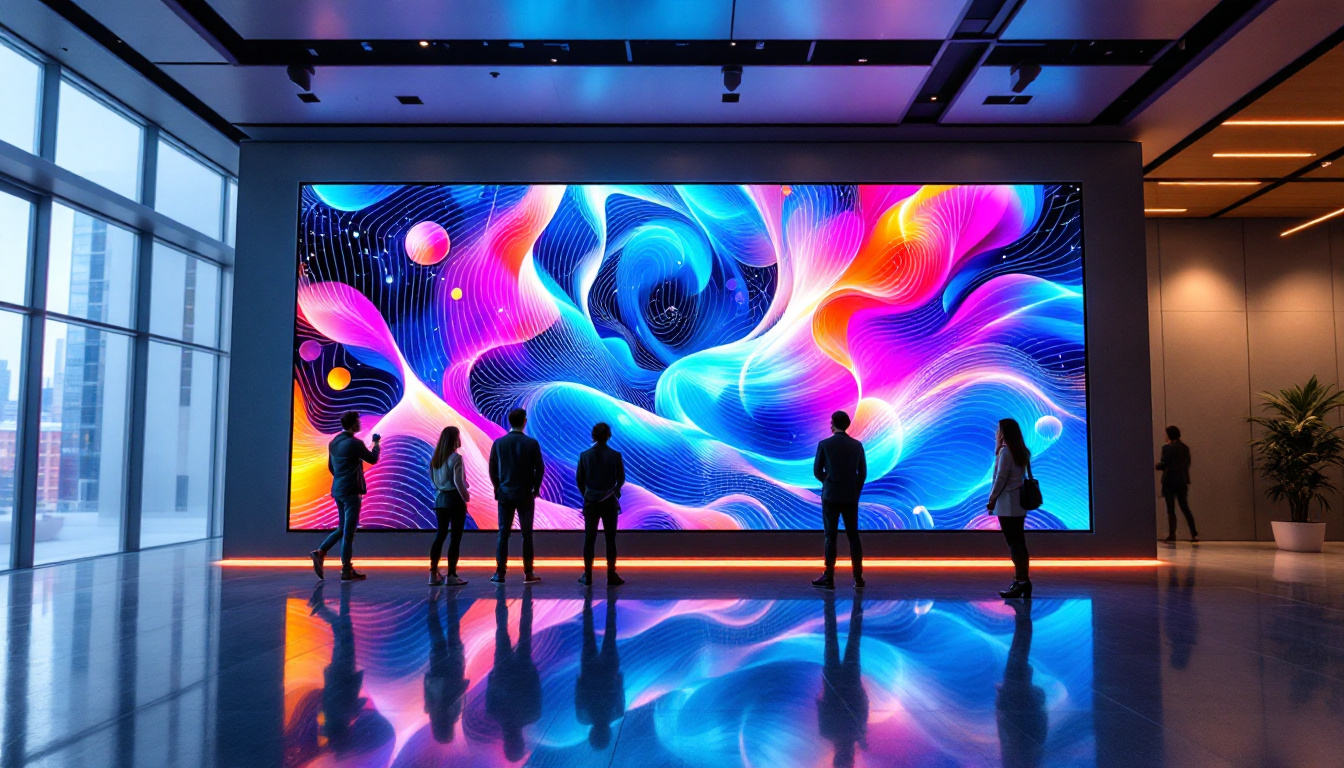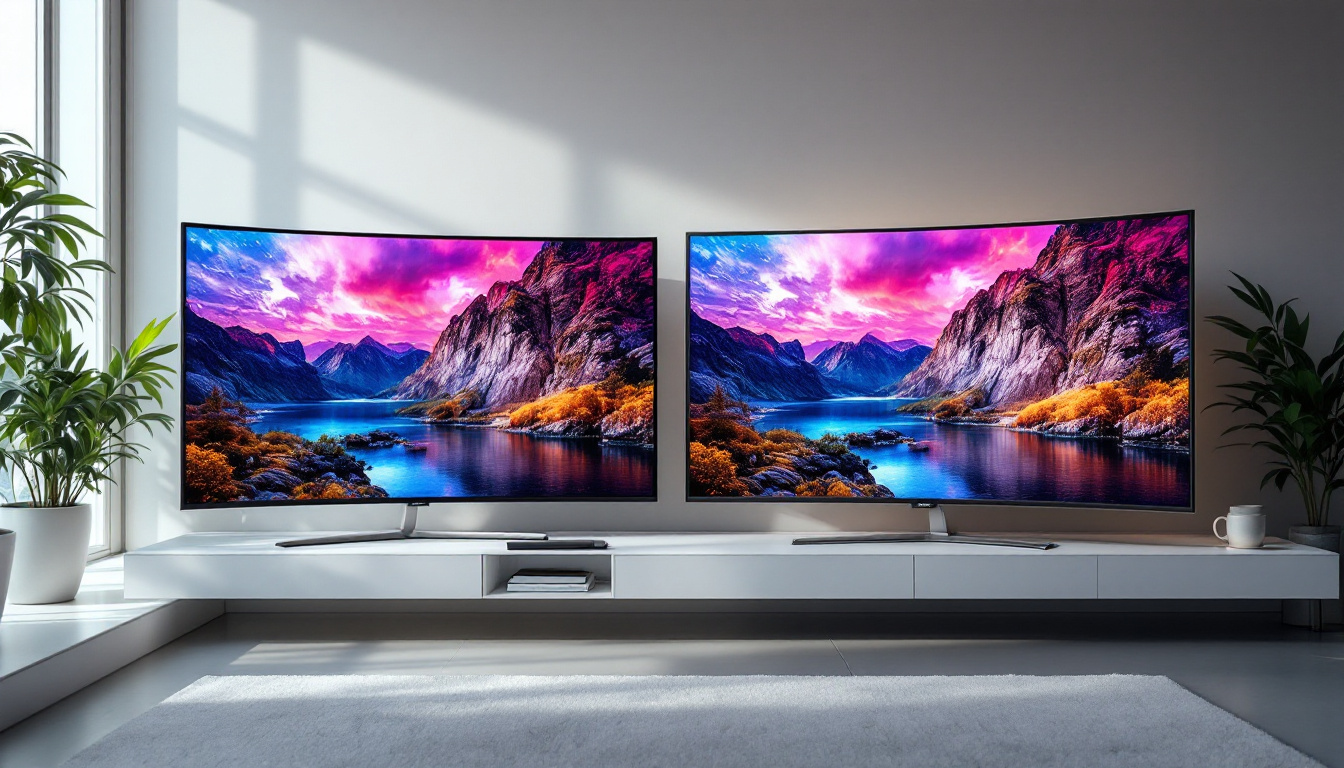2.1 HDMI Monitor: LED Display Explained
In the world of technology, the HDMI (High-Definition Multimedia Interface) has become a standard for connecting various devices, particularly monitors and televisions. The 2.1 HDMI specification, in particular, brings several advancements that enhance the viewing experience. Coupled with LED display technology, this combination offers a remarkable visual experience that is worth exploring in detail.
Understanding HDMI 2.1
The HDMI 2.1 specification was introduced to address the growing demands of modern multimedia content. It supports higher resolutions and refresh rates, making it an ideal choice for gamers, movie enthusiasts, and professionals alike.
Key Features of HDMI 2.1
One of the standout features of HDMI 2.1 is its support for 8K resolution at 60Hz and 4K at 120Hz. This capability allows for incredibly smooth visuals, which is particularly beneficial for fast-paced gaming and high-definition video playback. Additionally, HDMI 2.1 supports Dynamic HDR, which enhances the color and contrast of each frame, providing a more immersive viewing experience. The technology behind Dynamic HDR ensures that each scene is optimized for the best possible picture quality, allowing for deeper blacks and brighter highlights that truly bring content to life.
Another notable feature is the eARC (Enhanced Audio Return Channel), which allows for high-quality audio formats to be transmitted back to the audio system. This is crucial for home theater setups, as it simplifies the connection between the TV and audio receiver, ensuring that users can enjoy a rich sound experience without the hassle of multiple cables. With eARC, users can also take advantage of advanced audio formats like Dolby Atmos and DTS:X, which provide a three-dimensional sound experience that complements the stunning visuals.
Benefits of Upgrading to HDMI 2.1
Upgrading to HDMI 2.1 can significantly enhance the overall multimedia experience. With the ability to support higher resolutions and refresh rates, users can enjoy crystal-clear images and smoother motion. This is especially important in gaming, where every millisecond counts. Furthermore, the improved audio capabilities ensure that users can experience sound that matches the stunning visuals. The inclusion of features like Variable Refresh Rate (VRR) and Auto Low Latency Mode (ALLM) also means that gamers can enjoy a more responsive and fluid gaming experience, reducing screen tearing and lag during intense gameplay.
Moreover, HDMI 2.1 is backward compatible, meaning that older devices can still connect without any issues. This feature allows users to gradually upgrade their systems without needing to replace all their devices at once. Additionally, as more content becomes available in higher resolutions and advanced audio formats, having HDMI 2.1 ensures that users are future-proofed against the rapidly evolving technology landscape. This forward-thinking approach not only maximizes the lifespan of existing equipment but also enhances the enjoyment of new content as it becomes available, ensuring that every viewing experience is as rich and engaging as possible.
LED Display Technology
LED (Light Emitting Diode) technology has transformed the way displays are manufactured and viewed. It offers several advantages over traditional LCD and CRT displays, making it a popular choice for monitors and televisions.
How LED Displays Work
LED displays utilize a series of tiny light-emitting diodes to create images. These diodes can emit different colors of light, which combine to produce the full spectrum of colors seen on the screen. Unlike traditional displays that rely on backlighting, LED displays can achieve deeper blacks and brighter whites, resulting in a more vibrant image.
There are two main types of LED displays: edge-lit and full-array. Edge-lit displays have LEDs positioned along the edges of the screen, while full-array displays have a grid of LEDs behind the entire screen. Full-array displays tend to offer better contrast and uniformity, making them a preferred choice for high-end monitors.
Advantages of LED Displays
One of the primary advantages of LED displays is their energy efficiency. They consume less power compared to traditional displays, which not only reduces electricity bills but also contributes to a lower carbon footprint. Additionally, LED displays are generally thinner and lighter, making them easier to mount and transport.
Another significant benefit is the improved color accuracy and brightness. LED displays can produce a wider color gamut, allowing for more realistic and vivid images. This is particularly important for professionals in graphic design and photography, where color accuracy is crucial.
Furthermore, LED technology has also paved the way for innovations such as OLED (Organic Light Emitting Diode) displays, which take the advantages of LED a step further by allowing each pixel to emit its own light. This results in even better contrast ratios and the ability to display true black, as pixels can be turned off completely. As a result, OLED displays are increasingly being favored for high-end televisions and smartphones, showcasing the continuous evolution of display technology.
Moreover, the durability of LED displays is another compelling advantage. Unlike traditional cathode ray tube (CRT) displays, which can suffer from screen burn-in and are more prone to damage, LED displays are built to withstand the rigors of daily use. This resilience makes them an ideal choice for both commercial settings, such as digital signage and advertising, as well as for personal use in homes, where longevity and reliability are key considerations.
Combining HDMI 2.1 with LED Displays
The combination of HDMI 2.1 and LED display technology creates a powerful synergy that enhances the viewing experience. With HDMI 2.1’s ability to support higher resolutions and refresh rates, coupled with the vibrant visuals of LED displays, users can enjoy a truly immersive experience.
Gaming Experience
For gamers, the benefits of this combination are particularly pronounced. The high refresh rates supported by HDMI 2.1 allow for smoother gameplay, reducing motion blur and providing a competitive edge. The enhanced color accuracy of LED displays ensures that games appear more lifelike, drawing players deeper into the virtual worlds they inhabit.
Furthermore, features like Variable Refresh Rate (VRR) and Auto Low Latency Mode (ALLM) provided by HDMI 2.1 help to eliminate screen tearing and reduce input lag, creating a seamless gaming experience. This is especially important in fast-paced games where timing is critical.
Home Theater Setup
In a home theater setup, the combination of HDMI 2.1 and LED displays offers a cinematic experience that rivals that of a commercial theater. The ability to support 8K resolution means that viewers can enjoy movies in stunning detail, while Dynamic HDR enhances the visual quality of each scene.
Additionally, the eARC feature allows for high-quality audio formats to be transmitted, ensuring that viewers can enjoy immersive soundscapes that complement the stunning visuals. This creates a more engaging experience, whether watching the latest blockbuster or enjoying a classic film.
Choosing the Right 2.1 HDMI Monitor
When selecting a 2.1 HDMI monitor with LED display technology, several factors should be considered to ensure that it meets the user’s needs and preferences.
Resolution and Size
The resolution and size of the monitor are critical factors. For those looking to take full advantage of HDMI 2.1, a monitor that supports 4K or 8K resolution is essential. Additionally, the size of the monitor should be chosen based on the intended use and viewing distance. Larger screens are ideal for immersive experiences, while smaller screens may be more suitable for close-up work.
It’s also important to consider the pixel density, as higher pixel density results in sharper images. This is particularly important for tasks that require detailed visuals, such as graphic design or video editing.
Refresh Rate and Response Time
The refresh rate and response time of the monitor play a crucial role in the overall performance, especially for gaming. A higher refresh rate, such as 120Hz, ensures smoother motion, while a lower response time reduces motion blur and ghosting effects. For competitive gamers, these factors can make a significant difference in gameplay.
When selecting a monitor, it is advisable to look for models that explicitly state their support for HDMI 2.1 features, ensuring compatibility with the latest gaming consoles and graphics cards.
Future-Proofing Your Setup
As technology continues to evolve, future-proofing your setup is essential. Investing in a 2.1 HDMI monitor with LED display technology not only enhances the current viewing experience but also prepares users for upcoming advancements.
Compatibility with Future Devices
With the rapid development of new devices, ensuring compatibility is vital. HDMI 2.1’s backward compatibility means that older devices can still connect, but having a monitor that supports the latest specifications ensures that users can take advantage of future technologies as they become available.
Additionally, as more content becomes available in higher resolutions and with advanced audio formats, having a monitor that can handle these advancements will enhance the overall experience.
Investing in Quality
When it comes to monitors, investing in quality pays off in the long run. Higher-quality monitors tend to have better build quality, superior color accuracy, and enhanced durability. This not only ensures a better viewing experience but also extends the lifespan of the device.
Researching reputable brands and reading reviews can help users make informed decisions, ensuring that they select a monitor that meets their needs and expectations.
Conclusion
The combination of HDMI 2.1 and LED display technology represents a significant advancement in the world of monitors. With the ability to support higher resolutions, faster refresh rates, and improved audio capabilities, this technology enhances the viewing experience for gamers, movie enthusiasts, and professionals alike.
As technology continues to evolve, investing in a 2.1 HDMI monitor with LED display technology is a smart choice for anyone looking to future-proof their setup. By considering factors such as resolution, refresh rate, and overall quality, users can select a monitor that not only meets their current needs but also prepares them for the exciting developments on the horizon.
Discover LumenMatrix LED Display Solutions
Ready to elevate your visual experience with the latest in display technology? Look no further than LumenMatrix, a pioneer in LED display innovation. Our extensive range of products, including Indoor and Outdoor LED Wall Displays, Vehicle LED Displays, and more, are designed to bring your content to life with unparalleled brightness and clarity. Whether for gaming, professional use, or enhancing your brand’s presence, LumenMatrix has the perfect LED solution to meet your needs. Check out LumenMatrix LED Display Solutions today and transform the way you see, share, and engage with the world.




